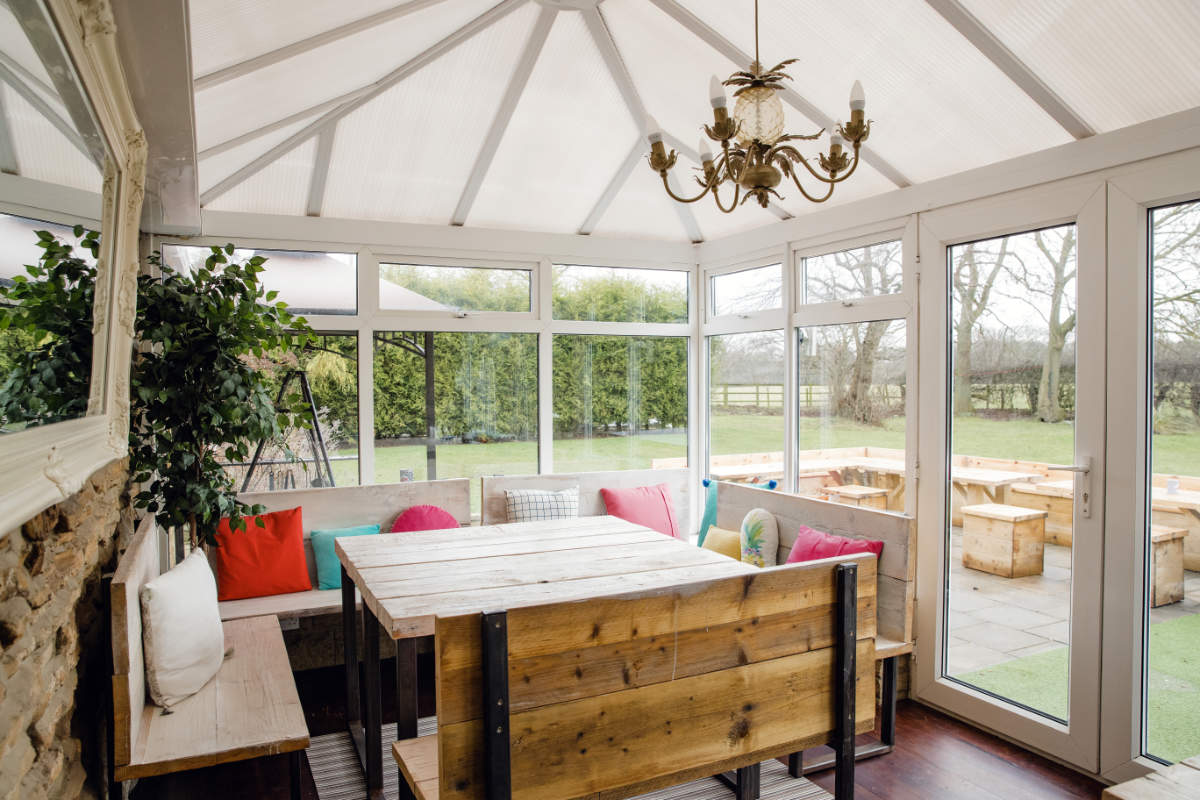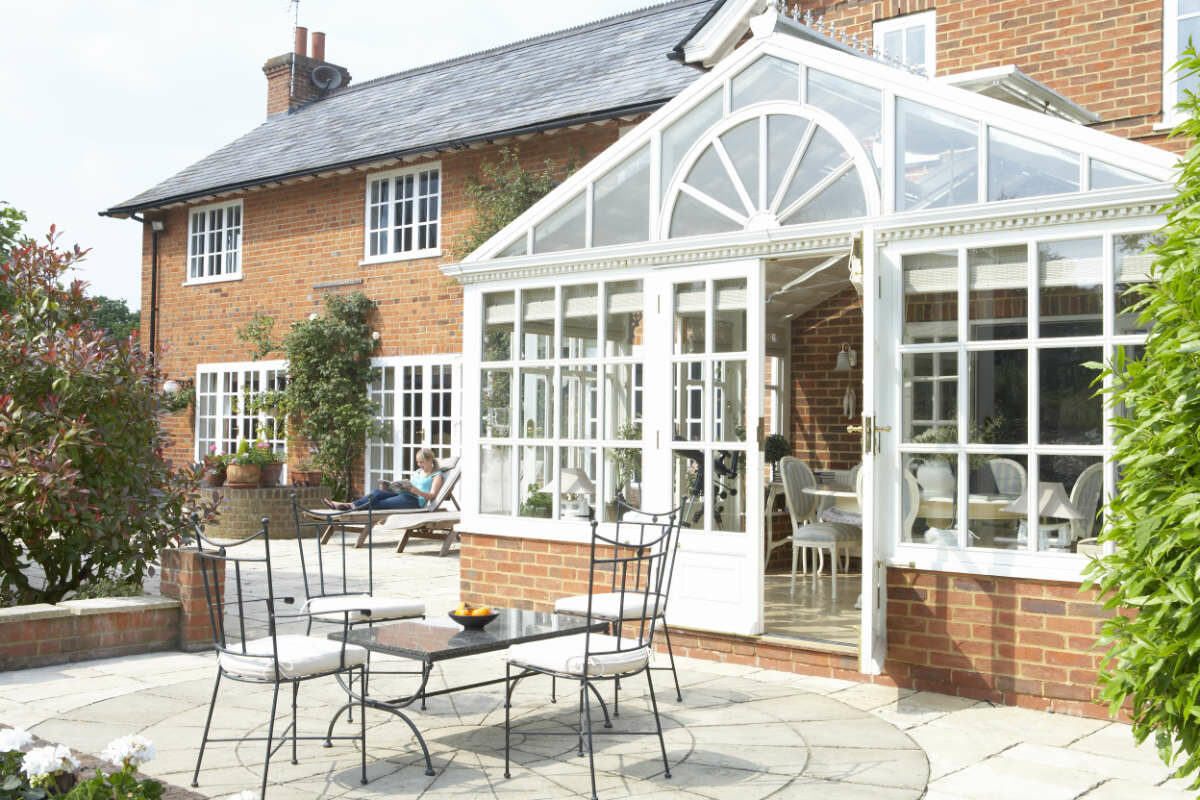Do you find your conservatory gets freezing in the winter and uncomfortably hot in the summer? If you are feeling the cost (in energy bills) of your conservatory and it’s not justifying its benefits, you might want to consider getting a new conservatory roof.
You’ll be glad to know that conservatory roofing materials have come on in leaps and bounds in recent years. Since 2010, conservatories are no longer required to be 75% translucent to meet building regulations standards. Let’s take a look at the most popular conservatory roofing options and list some pros and cons for each.
Visualise your ideal conservatory
The first step is to identify the problems with your conservatory as it stands. You should then think big about how it could address those problems. Would you like the space to be transformed into a kind of extension of your house (without it being a real extension)? Or would you prefer to preserve it as a sheltered space that lets the outside in with an abundance of natural light? Perhaps your old, dirty conservatory roof is due for a replacement and you want to keep the costs to a minimum. Whatever the end goal is, visualise that before you formulate a plan.

Glass or polycarbonate conservatory roof?
Although glass is always more expensive than polycarbonate, it is generally considered to be superior for a conservatory roof. It is a far better insulator, helping to keep the space cooler in summer and warmer in winter. It also has a more sophisticated aesthetic. However, you shouldn’t rule out polycarbonate completely – if your budget is more limited, you can be confident that it will still let plenty of natural light into the space. You might just need a portable heater to make those cold winter months more comfortable.
Is PVC good for conservatory roofing?
There are advantages and disadvantages to using PVC. If you don’t have a grand vision for your conservatory, and your budget is tight, a new PVC roof is probably your cheapest option. You can rely on PVC to allow natural light in, and it is highly durable with minimal maintenance requirements. However, the affordability of the material can be something of a false economy. Its thermal performance is poor, so it could end up costing more in the long-term through your energy bills. There is also the environmental fallout – some parts of PVC can be recycled, but a lot of it will most likely end up in landfill where it will linger for centuries.
Weigh up these pros and cons to make your decision.
The truth about glass
If you love to sit in your conservatory and gaze at the heavens, there are benefits to a fully glazed roof. Its durability is superb – even better than PVC – and installation is comparatively easy.
Advances in technology mean a glass roof conservatory is not quite the same as a greenhouse. However, glass won’t necessarily be the best performer as a roofing material for one reason – it is;t the best at maintaining a pleasantly even temperature in the conservatory.
Conservatory Roof Tiles
If you want your disused sunroom to be transformed into a new, functional room like any other in the home, tiles can be a superb conservatory roofing option. Many people now choose a tiled ‘warm roof’ for their conservatory to turn the space into an extension for their home.
A ‘warm roof’ consists of a lightweight aluminium frame with tiles overlaid on top and a plastered interior ceiling. It can even include things like skylights and Velux roof windows to let natural light in. Most importantly, they have a better thermal rating than the average house roof.
Synthetic tiles are usually applied on tiled conservatory roofs. These are defined as weighing less than 20kg per square metre, which is necessary as most conservatories are not structurally capable of supporting heavy roof tiles made from materials like concrete. Lightweight tiles are typically very cost-effective and are easier and cheaper to install. This amounts to more safety if you are doing a DIY job. They are also environmentally friendly since there are few vehicles required to transport the lighter load.
The two leading producers of lightweight conservatory roof tiles are:
- Tapco Slate (imitation slate tiles made in the UK)
- Metrotile (metal shingle tiles made in Belgium)
Tapco tiles have that iconic texture that you see in natural slate. There are 20 colour options available, all made from limestone and recyclable plastic. Metrotile tiles are fabricated from steel, making them highly resistant to wear and tear as well as adverse weather conditions. They also reflect heat from the sun to retain warmth. If you visualise a conservatory roof that will help achieve warmth, light and year-round usability, the best option is a ‘hybrid’ conservatory. This will have a solid vaulted roof, energy-efficient glass panels and an insulated aluminium frame.
Things to consider before choosing a new conservatory roof:
- Remember that the right aesthetic really comes down to what you want to achieve. Do you want the conservatory to continue looking like a conservatory or would you prefer it to resemble an extension when observed from outside?
- Does the room next to your PVC or glass conservatory rely on the light that flows through it? A new solid roof could make the adjoining room feel less bright.
- PVC and glass conservatories are not a particularly attractive selling point for many buyers. Do you want a conservatory roof that increases the value of your home?
- New-build conservatories will not require planning permission, but building regulations must still be complied with.
- In order to ensure a re-roofed conservatory is still classed as a conservatory, rather than an extension, it must be separated from the main house by external walls, windows and doors that meet the necessary building regulations. It must also have its own heating system (it cannot be connected to the central heating).
It is best to seek the advice of a professional to get an accurate idea of the cost of a new conservatory roof. An expert will factor in things like:
- The type of frame necessary for the replacement roof (timber, PVC or aluminium)
- The type of tiles you plan to use
- The removal of the existing roof
- Any necessary internal work (plastering, lighting, etc.)
- Whether it will require structural reinforcements to comply with building regulations.
Whatever choices you make for your new conservatory, it should be a place where you can feel relaxed and comfortable. Whether you like to soak up some sunlight or watch the cloud float by, always keep that in mind.

